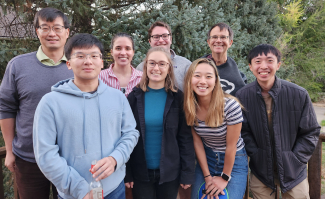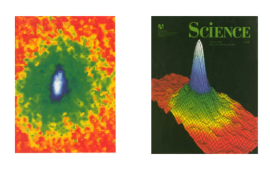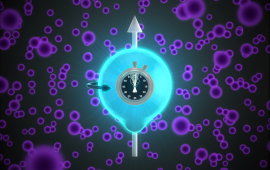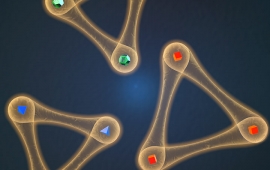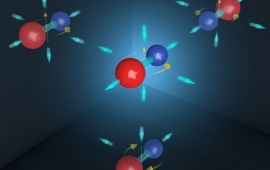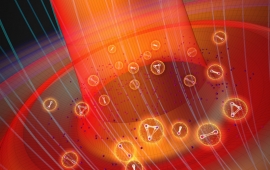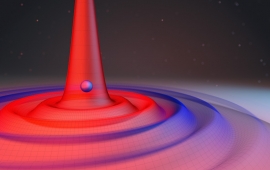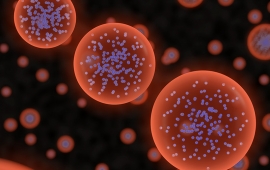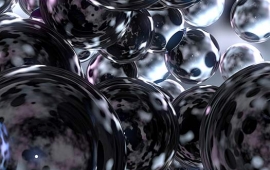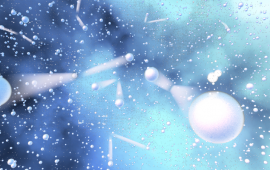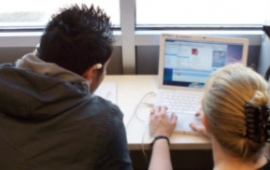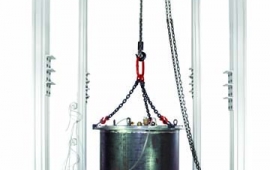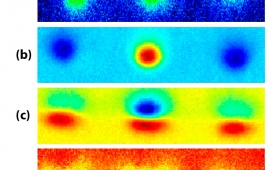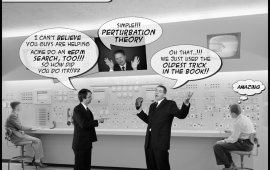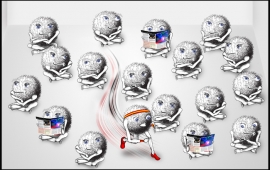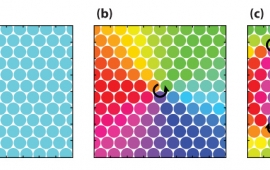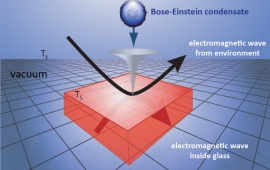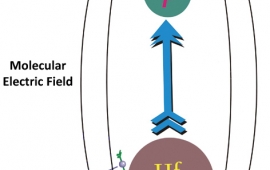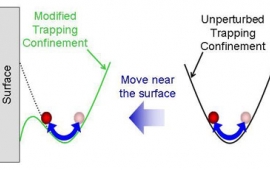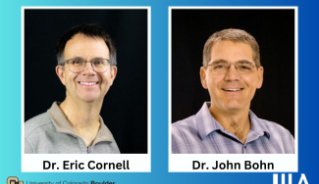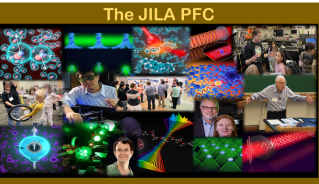The purpose of this experiment is to make a precision measurement of the electic dipole moment (EDM) of the electron. Because a finite electron EDM violates time symmetry, and thus by the CPT theorem violates CP symmetry as well, a precision upper bound on an electron EDM constrains modelbuilders. In this experiment we use trapped ThF+ molecular ions and use the intermolecular electric field to greatly enhance a potential electron EDM signal.
About the Cornell Group
We work in the field of experimental Atomic, Molecular and Optical Physics. One major effort involves leveraging the techniques of precision metrology to look for evidence of new particle physics. A second effort makes use of ultralow temperature atomic gases to explore few- and many-body quantum physics.
Research Areas
Stories About Our Research
Research Highlights
In the Spotlight
JILA and the University of Colorado Boulder's Department of Physics proudly announce two 2024 Physics Department Teaching Award recipients: JILA Fellow and NIST Fellow and Professor Eric Cornell and JILA Fellow and Professor John Bohn. These awards recognize their exceptional dedication to teaching and their profound impact on students at different levels of their academic journey.
Read More
The JILA Physics Frontiers Center (PFC), an NSF-funded science center within JILA (a world-leading physics research institute), has recently been awarded a $25 million grant after a re-competition process.
This science center brings together 20 researchers across JILA to collaborate to realize precise measurements and cutting-edge manipulations to harness increasingly complex quantum systems. Since its establishment in 2006, the JILA PFC’s dedication to advancing quantum research and educating the next generation of scientists has helped it to stand out as the heart of JILA’s excellence.
Read More
JILA and NIST Fellows Jun Ye and Eric Cornell's recent research on advancing electron electric dipole moment (eEDM) measurements has been highlighted in Physics World.
Read More
This year, JILA celebrates its 60th anniversary. Officially established on April 13, 1962, as a joint institution between the University of Colorado Boulder and the National Institute of Standards and Technology (NIST), JILA has become a world leader in physics research. Its rich history includes three Nobel laureates, groundbreaking work in laser development, atomic clocks, underlying dedication to precision measurement, and even competitive sports leagues. The process of creating this science goliath was not always straightforward and took the dedication and hard work of many individuals.
Read More
JILA Address
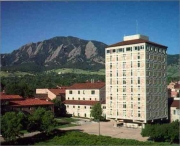 We are located at JILA: A joint institute of NIST and the University of Colorado Boulder.
We are located at JILA: A joint institute of NIST and the University of Colorado Boulder.
Map | JILA Phone: 303-492-7789 | Address: 440 UCB, Boulder, CO 80309




